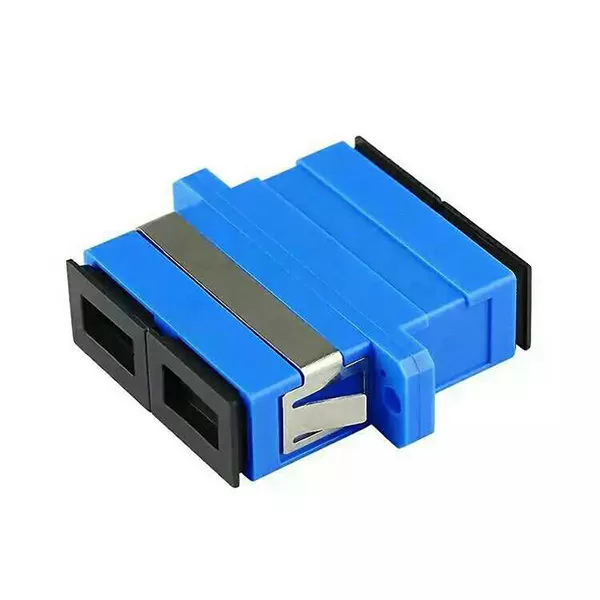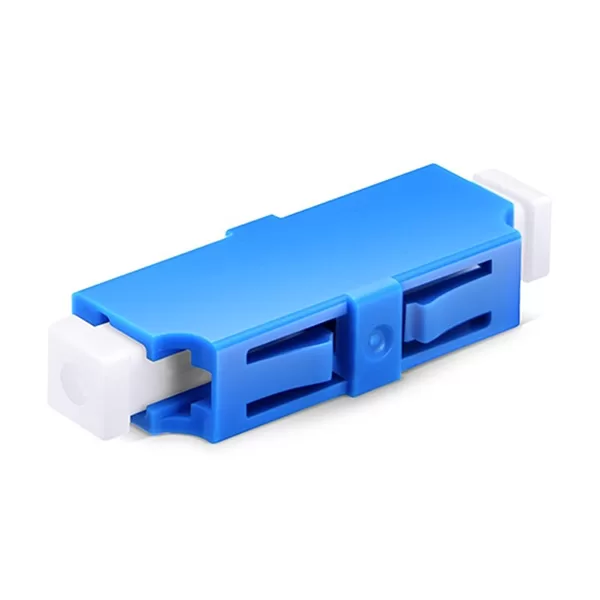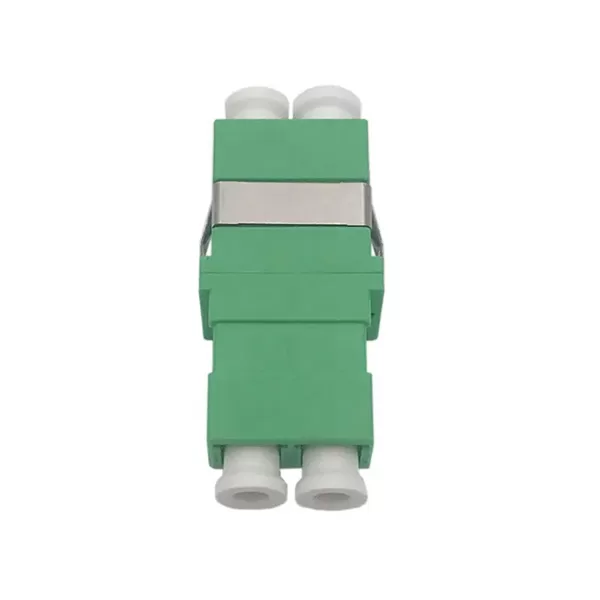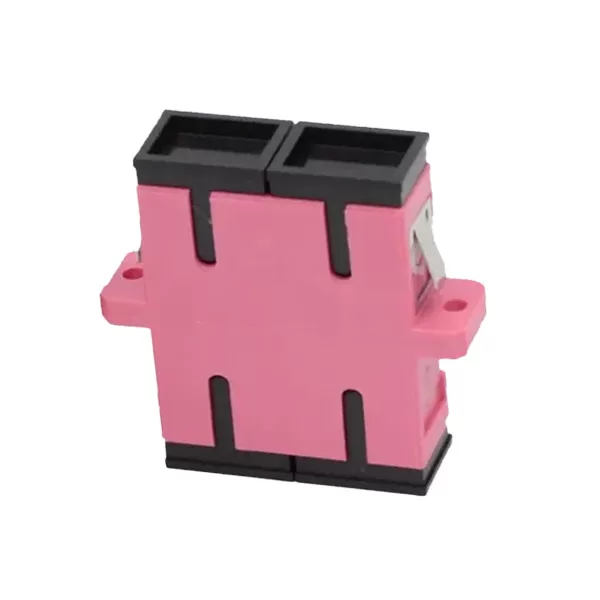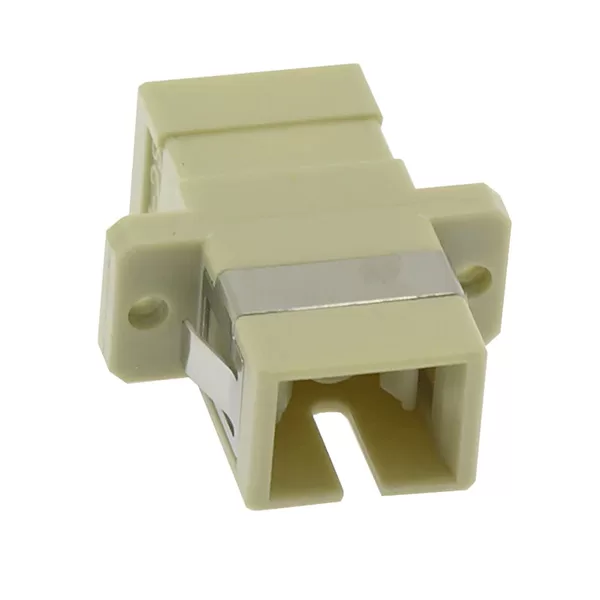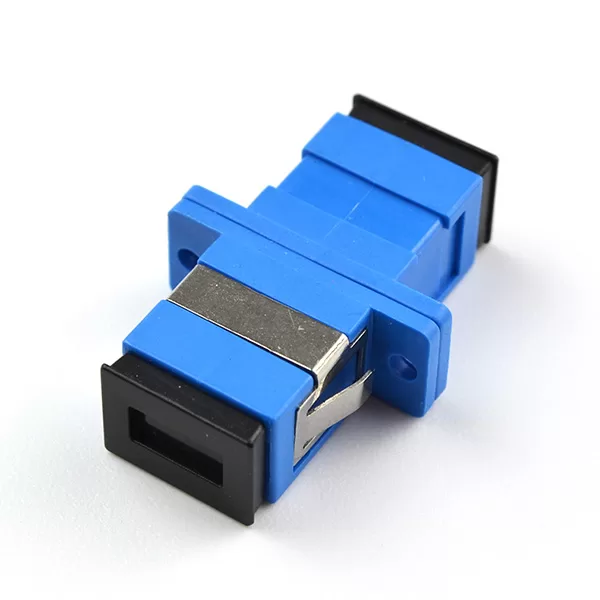Pengenalan adaptor SC UPC
Adaptor SC/UPC banyak digunakan dalam sistem komunikasi data berkecepatan tinggi, seperti pusat data dan jaringan serat optik jarak jauh. UPC (Ultra Physical Contact) mengacu pada permukaan ujung ferrule yang halus dan bulat yang membantu mengurangi pantulan balik.
Manfaat dan keuntungan dari Adaptor Serat Optik Dupleks Mode Tunggal SC/UPC
Adaptor serat optik dupleks mode tunggal SC/UPC memiliki beberapa manfaat dan keuntungan, termasuk:
- Kehilangan Penyisipan Rendah: Konektor SC/UPC memiliki polesan kontak ultra-fisik (UPC), yang memberikan kehilangan penyisipan rendah dan kehilangan balik tinggi, memastikan kehilangan sinyal minimal dan kualitas sinyal optimal.
- Keandalan Tinggi: Konstruksi presisi konektor SC/UPC membuatnya sangat andal, memberikan kinerja yang konsisten dari waktu ke waktu.
- Kemudahan Pemasangan: Desain yang ringkas dan mekanisme penguncian dorong-tarik yang sederhana dari konektor SC/UPC membuat pemasangan menjadi cepat dan mudah, sehingga mengurangi waktu dan biaya pemasangan.
- Daya tahan: biasanya terbuat dari bahan berkualitas tinggi, seperti keramik atau logam, membuatnya tahan lama dan mampu menahan kondisi lingkungan yang keras.
- Bandwidth Tinggi: Adaptor serat optik mode tunggal mendukung transmisi data berkecepatan tinggi dan bandwidth tinggi, membuatnya cocok untuk aplikasi jaringan berkecepatan tinggi.
- Hemat biaya: Konektor SC/UPC tersedia secara luas dan hemat biaya, menjadikannya pilihan populer untuk instalasi jaringan kecil dan besar.
Kesimpulannya, adaptor serat optik dupleks mode tunggal SC/UPC menawarkan berbagai manfaat, termasuk kehilangan penyisipan rendah, keandalan tinggi, kompatibilitas, kemudahan pemasangan, daya tahan, bandwidth tinggi, dan efektivitas biaya, sehingga menjadikannya sangat populer.
Spesifikasi Adaptor SC UPC
| Kerugian penyisipan | Biasanya kurang dari 0,3 dB |
| Mengembalikan kerugian | Biasanya lebih besar dari 50 dB |
| Jenis konektor | SC/UPC ke SC/UPC |
| Mode serat | Modus Tunggal |
| Kepatuhan | RoHS, Telcordia GR-326-CORE, TIA/EIA-604-10 |
| Bahan perumahan | Zirkonia atau Perunggu Fosfor |
| ferrule keramik | Biasanya terbuat dari zirconia dengan diameter 2,5mm |
| Daya tahan | Lebih dari 1000 siklus kawin |
| Tx/Resep | Rangkap |
Tanya Jawab Umum tentang Adaptor SC UPC
Bagaimana cara memilih Adaptor Serat Optik Dupleks Mode Tunggal SC/UPC?
Memilih adaptor serat optik dupleks mode tunggal SC/UPC yang tepat memerlukan pertimbangan beberapa faktor, termasuk:
* Kompatibilitas: Pastikan adaptor kompatibel dengan kabel dan peralatan serat optik Anda.
* Insertion Loss: Insertion loss adalah jumlah cahaya yang hilang saat adaptor dimasukkan ke jalur optik. Semakin rendah insertion loss, semakin baik kinerja adaptor.
* Return Loss: Return loss adalah jumlah cahaya yang dipantulkan kembali dari antarmuka adaptor. Return loss yang tinggi menunjukkan manajemen pantulan yang baik, yang penting untuk menjaga integritas sinyal.
* Daya tahan: Adaptor harus mampu menahan kondisi lingkungan Anda, seperti suhu, kelembapan, dan tekanan mekanis.
* Kepatuhan: Pastikan adaptor mematuhi standar industri, seperti Telcordia GR-326-CORE, IEC 61754-20, dan RoHS.
* Reputasi Merek: Pilih merek bereputasi baik yang menyediakan produk berkualitas tinggi dan memiliki rekam jejak baik dalam industri.
* Biaya: Pertimbangkan biaya adaptor dan seimbangkan dengan persyaratan kinerja dan kualitas aplikasi Anda.
Singkatnya, memilih adaptor serat optik dupleks mode tunggal SC/UPC yang tepat memerlukan pertimbangan cermat terhadap persyaratan aplikasi dan evaluasi menyeluruh terhadap berbagai opsi yang tersedia di pasaran.
Bagaimana cara memasang Adaptor Serat Optik Dupleks Mode Tunggal SC/UPC?
Memasang adaptor serat optik dupleks mode tunggal SC/UPC melibatkan langkah-langkah berikut:
1. Siapkan kabel: Sebelum memasang adaptor, pastikan kabel serat telah dikupas dan dibelah dengan benar untuk mengekspos serat telanjang.
2. Bersihkan serat: Gunakan pembersih serat optik untuk menghilangkan debu, minyak, atau kontaminan lain dari ujung serat.
3. Masukkan serat ke dalam adaptor: Sejajarkan serat dengan pemandu di adaptor, dan masukkan serat perlahan ke dalam konektor hingga terkunci pada tempatnya.
4. Verifikasi sambungan: Gunakan pengukur daya serat optik atau sumber cahaya untuk memverifikasi bahwa sambungan aman dan cahaya melewati serat.
5. Ulangi proses untuk serat lainnya: Ulangi langkah 2-4 untuk serat kedua di adaptor dupleks.
6. Amankan adaptor: Setelah kedua serat tersambung, pastikan adaptor terpasang erat pada perangkat atau panel.
7. Uji sambungan: Terakhir, lakukan uji ujung ke ujung penuh pada sambungan serat optik guna memverifikasi apakah sinyal terkirim dengan benar.
Catatan: Petunjuk spesifik dapat bervariasi tergantung pada jenis adaptor yang Anda gunakan, jadi pastikan untuk berkonsultasi dengan petunjuk produsen untuk mendapatkan hasil terbaik.

